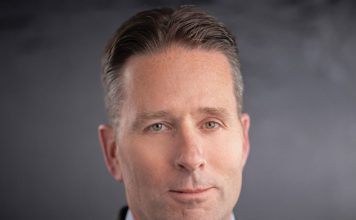A proposed high-school math class for struggling juniors and
seniors is being sharply criticized by two advanced-placement math
teachers.
Gilroy – A proposed high-school math class for struggling juniors and seniors is being sharply criticized by two advanced-placement math teachers. The class, called Finite Mathematics, would serve as an alternative to trigonometry for students who barely pass Algebra II and would likely count as a third math credit, making them eligible to apply to schools in the University of California and California State University systems.
“I think our numbers in math will go up if we offer it and I think these kids will be better off than if they did not take any course,” Gilroy High School Principal James Maxwell said.
The course would encourage students who barely passed Algebra II to take a third year of high school math, he said. With an emphasis on math’s applications and not abstract concepts, the course would allow students to put concepts learned in previous years to work.
Similar courses have been implemented in area high schools and approved by the state’s two major university systems, which require three math credits to be considered for admission. If the proposed course passes muster, it would serve as a way for students to earn a third math credit without taking trigonometry – the only course currently offered to juniors and seniors who do not get high enough grades to take Advanced Placement courses.
The course gives credit without teaching new material, advanced placement calculus teacher and opponent of the class Wayne Scott said at the Gilroy Unified School District board of trustees meeting Thursday night. During a debate on the topic, he claimed the course amounted to a rehash of Algebra I and II topics under a new name.
“Adding this class in essence gives students one more year of credit for no additional mathematics,” he said.
However, other mathematics teachers claim the course does visit new material by looking at the same concepts more in depth. This contingent includes trigonometry teacher Catherine Silva and three teachers who have already volunteered to teach the course. Still, Scott objects that the course repeats material.
The concepts the course visits – including probability, finances, matrices and statistics – all appear in Algebra I and II, he said. If students have taken these classes and passed, they should have an understanding of the concepts. If they do not understand the concepts, they should not have passed the class.
That students need a course that repeats these concepts indicates too many students are getting passing grades in Algebra II that they do not deserve, Scott said. This practice of passing students so they do not repeat a class – known as social promotion – is not unique to Algebra II or the high school, but starts in the early grades, he said. However, social promotion affects the high school greatly because it receives students that have been inappropriately passed for years and therefore lack the base of skills needed to learn new material.
District test scores suggest there is a problem in the system. Last year, only 19 percent of ninth-graders scored proficient or advanced on the Algebra I California Standards Test, compared to 40 percent statewide. Similarly, only 8 percent of freshmen taking the general mathematics exam – which measures students on sixth- and seventh-grade-level math – scored proficient or advanced, compared to 26 percent statewide.
The Finite Mathematics course does not address this underachievement, Scott said. Instead, it allows the high school to continue the district trend of social promotion, claiming its students are ready for college without getting them ready for college-level math, said Scott.
“We’re passing the buck to the colleges and to the kids and to the parents and saying, ‘Go take your remedial class, deal with it when you get to college,’ ” he said.
Rich Hammond, an Advanced Placement Statistics and geometry teacher also disapproves of the new course, but declined to comment further.
The topics in Finite Mathematics are not new, but the course takes on more advanced work than Algebra I or II, Silva said at the meeting. Revisiting topics is a common occurrence in math – high school algebra classes look at the topic of functions, which is taught in eighth grade, but feature more complex problems.
As the course teaches new material, it is not a form of social promotion, but a way to engage more students in a discipline where the district is struggling, said Silva. Juniors and seniors who are not high achieving can chose between this class and trigonometry, which is currently offered.
The course teaches math to students who would otherwise not take a course or who would be lost in trigonometry, said David Leveroni, who has taught a Finite Mathematics class for two years at Live Oak High School in Morgan Hill.
“This class gives them a chance to learn some math that’s new,” he said. “It’s still challenging but it’s not as intensely mathematical.”
The Gilroy board supported the addition of the high school’s new class but will not vote on it until a revised resolution is brought in June.
“From my perspective, it’s just providing an additional alternative,” said trustee Francisco Dominguez.
Trustees Denise Apuzzo, Jaime Rosso and Rhoda Bress also expressed tentative approval for the class. The board will be waiting eagerly for the revised resolution next month, said Apuzzo.
“We’ve needed something there that was an alternative to trigonometry long before this,” she said.













